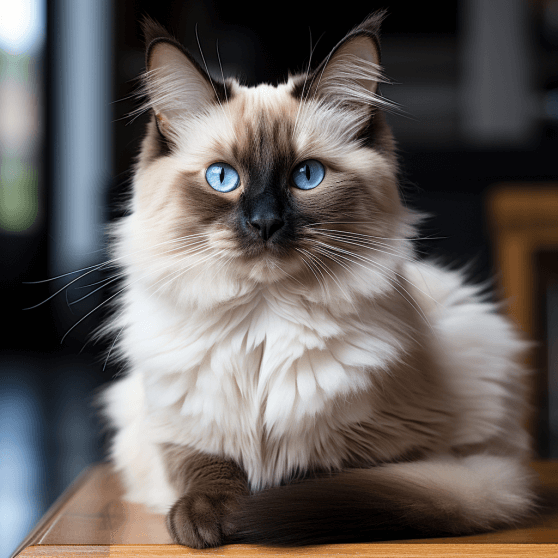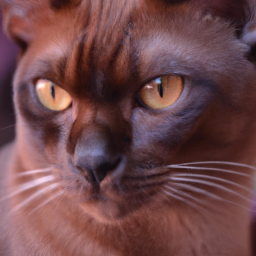Balinese – Cat Breeds
In the intricate realm of feline breeds, the grace and elegance of the Balinese cat holds a place of undeniable prestige. This captivating campaign uncovers the distinct features and idiosyncrasies of this particular breed, showcasing the Balinese in all its unique glory. Traits that set them apart, their genetic lineage, tips to ensure their well-being, and fascinating tidbits about these majestically poised creatures will be laid bare, endearing you even more to these enchanting cats. Your understanding of Balinese cats is about to be enriched—prepare to embrace the world of this extraordinary breed.
History of Balinese Cats
Origin and Ancient History
Let’s start our journey with an intriguing fact: Despite its name, the Balinese Cat doesn’t actually hail from Bali! Instead, it originated from a spontaneous genetic mutation in the Siamese breed in the United States. This long-haired, silky-furred beauty shares many aspects with its Siamese ancestors, differing primarily in the length of its coat.
Development of the Breed
The Balinese, fondly referred to as a long-haired Siamese, appeared in litters of purebred Siamese cats in the early 1900s. Breeders initially considered this a fault, but as time passed, they began to see the appeal of this elegant variant and started selective breeding to maintain the trait. Helen Smith of Merry Mews cattery is credited with naming the breed “Balinese” because she believed their grace and poise resembled that of Balinese dancers.
Global Recognition and Spread
The Balinese breed was first recognised by the Cat Fanciers’ Federation in 1961, followed by The International Cat Association (TICA) and the Cat Fanciers Association (CFA). Today, these elegant and graceful felines have found homes in many countries around the world, widely adored for their stunning appearance and amiable personality.

Physical Appearance and Traits of Balinese
Size and Weight
Balinese cats are medium-sized, usually weighing between 5 to 10 pounds. They genetically mirror the Siamese cats in shape with a slender body, wedge-shaped head, and large ears.
Coat and Colours
The star of the show is their coat. It’s medium-long, silky, and lies close to the body. They don’t have an undercoat, meaning less grooming for you! Traditionally, Balinese cats have pointed colours, like their Siamese lineage. The body is lighter, with darker hues on the ears, face, paws, and tail.
Distinctive Features
Their most distinctive feature, however, is their stunning blue almond-shaped eyes, which sparkle with intelligence and curiosity. Their long, plumed tail, often described as “fox-like,” further accentuates their overall elegance.
Life Span
Balinese cats are generally healthy and robust, and have a lifespan of around 15 years, but with good care, they can live beyond 20 years.
Balinese Cat Behaviour and Temperament
General Behaviour
Balinese cats are known for their playful and friendly nature. They are active and agile, often displaying their acrobatic skills, leaping and jumping to high places around the home. Restlessness isn’t in their nature; they would also cherish peaceful moments of lounging around.
Interaction with Humans
They enjoy interacting with their human family members and can be quite vocal, reveling in holding hearty ‘conversations’. Their playful, affectionate nature makes them excellent companions for families or individuals.
Interaction with Other Animals
They get along well with other pets, including dogs, especially with proper socialization at an early age.
Level of Activity and Playfulness
While quite active, Balinese cats would express their playful side with toys and interactive games, ensuring there’s never a dull moment when they are around.
Balinese Cat Health and Care
Common Health Issues
Balinese cats have relatively fewer health issues. However, as descendants of the Siamese lineage, they may be prone to certain genetic conditions such as Amyloidosis – a liver disease, and Progressive Retinal Atrophy that could lead to blindness.
Genetic Disorders
One significant genetic disorder seen in Balinese cats is a neurological issue called ‘Congenital Vestibular Disease’, that affects their coordination and balance. But many of these health concerns can be managed with proper care and routine check-ups.
Grooming and Maintenance
Thankfully, Balinese cats are low-maintenance when it comes to grooming. They don’t possess the double coat like most long-haired breeds and hence don’t require frequent brushing.
Dietary Requirements
Feeding your Balinese a balanced, high-quality diet is crucial to their health and well-being. Although their dietary needs are generally typical of most cats, each cat is unique and may have individual nutritional requirements depending on their health, age, and lifestyle.
Temperament and Personality of Balinese
General Temperament
Balinese cats have a generally cheerful and outgoing nature. They are known for their agility and grace and have a knack for keeping their owners entertained with their antics.
Affection Level
Their affection level is remarkable. Balinese cats seek constant companionship and are quite expressive of their love for their owners.
Intelligence and Trainability
Noted for their high intelligence, Balinese cats are easily trainable and can quickly grasp new commands. This trait, coupled with their athletic prowess, makes for endless fun-filled training sessions.
Comfort with Children and Other Pets
Balinese cats are generally quite comfortable around children and other pets. Their sociable, friendly nature means that they can easily adapt to an environment with other animals.
Breeding and Genetics of Balinese
Breeding History
The history of Balinese breeding began chiefly promoting the Siamese’s characteristic points and the beauty of the long, plush coat. It was further fortified to ensure breed standards and maintain genetic health.
Influence of Genetics on Health and Appearance
The Balinese inherit the remarkable pointed colors and striking blue eyes from their Siamese ancestors. Genetics play a role in potential health issues, but ethical breeding practices have kept these issues in check to a large extent.
Breeding Considerations
It is important for breeders to consider genetic health, physical conformation to breed standards, temperament, and coat quality when breeding Balinese cats.
Popular Bloodlines
While there are many reputable Balinese breeders worldwide, specific bloodlines like ‘Siamese Royalty,’ ‘Tresor Cats,’ and ‘Applecat Acres,’ have gained recognition for their commitment to preserving the breed’s beauty and health.
Purchasing a Balinese Cat
Finding a Recognised Breeder
When purchasing a Balinese cat, it’s crucial to find a recognised and reputable breeder. They can ensure that the kittens are genetically healthy and properly socialized, and will provide you with accurate and comprehensive information about the breed and individual kitten.
Cost Considerations
The average cost of a Balinese kitten ranges from $400 right up to $600, depending on the breeder, lineage, and specific traits of the kitten.
Initial and Ongoing Costs
Beyond the initial cost of purchasing the kitten, you should consider ongoing costs such as food, litter, and regular vet checks. Also factor in vaccination costs, neutering or spaying, and any potential healthcare needs.
Tips for New Owners
New owners should prepare their homes for a high-energy, sociable cat. Having toys at hand and safe spaces the cat can climb and explore is crucial.
Caring for a Balinese Kitten
Proper Nutrition
Feeding your Balinese kitten with a balanced diet rich in protein is vital for their growth and development. Consult with the breeder or a vet to determine the best kind of kitten food.
Training Your Kitten
Balinese kittens are intelligent and eager to learn. Start training them early with litter training, socialization, and basic commands.
Health Check-ups and Vaccinations
Regular vet visits for health check-ups and maintaining a vaccination schedule is a must to prevent common feline health issues and ensure your kitten stays healthy.
Socialisation Skills
Introduce your kitten to various experiences, people, and pets to help them grow into a confident, social adult cat.
Myths and Misconceptions about Balinese
Common Misconceptions
One misconception about Balinese cats is that they are high-maintenance because of their long hair. However, their hair is easy to manage due to a lack of undercoat.
Fact versus Fiction
Another fiction often told about Balinese cats is that they are hypoallergenic. No breed of cat is truly hypoallergenic, though some people may find certain breeds cause fewer allergic reactions.
Unfounded Myths and Allegations
Typically characterised as a ‘vocal’ breed, some people assume that Balinese cats are excessively noisy. But they use their voice to communicate needs or exhibit affection and are not generally disruptive.
The Truth about the Breed
Ultimately, Balinese cats are intelligent, affectionate, and playful pets that can make a great addition to most houses, don’t require excessive grooming, and aren’t as ‘chatty’ as they are reputed to be.

Balinese in Pop Culture
Appearances in Film and Television
While not as popular as some other breeds in TV or film, Balinese cats’, particularly in animations, have accumulated some screen time.
The Balinese in Literature
In literature, they are often depicted as poised and clever, mirroring their real-life counterparts.
Famous Balinese Cats
There aren’t any ‘famous’ Balinese cats per se, but they are well-regarded in cat-loving circles and cat shows for their grace and beauty.
Balinese as Cultural Symbols
In many places, Balinese cats aren’t just pets – they’re considered a symbol of grace and beauty, attributed to their elegant, dancer-like stature and silky coat.
In conclusion, if you’re seeking a feline friend that is affectionate, playful, and good with families, the Balinese could be a purrfect match. While they do have their grooming needs and potential health issues, these are easily manageable, making the breed a joy to own and love.







